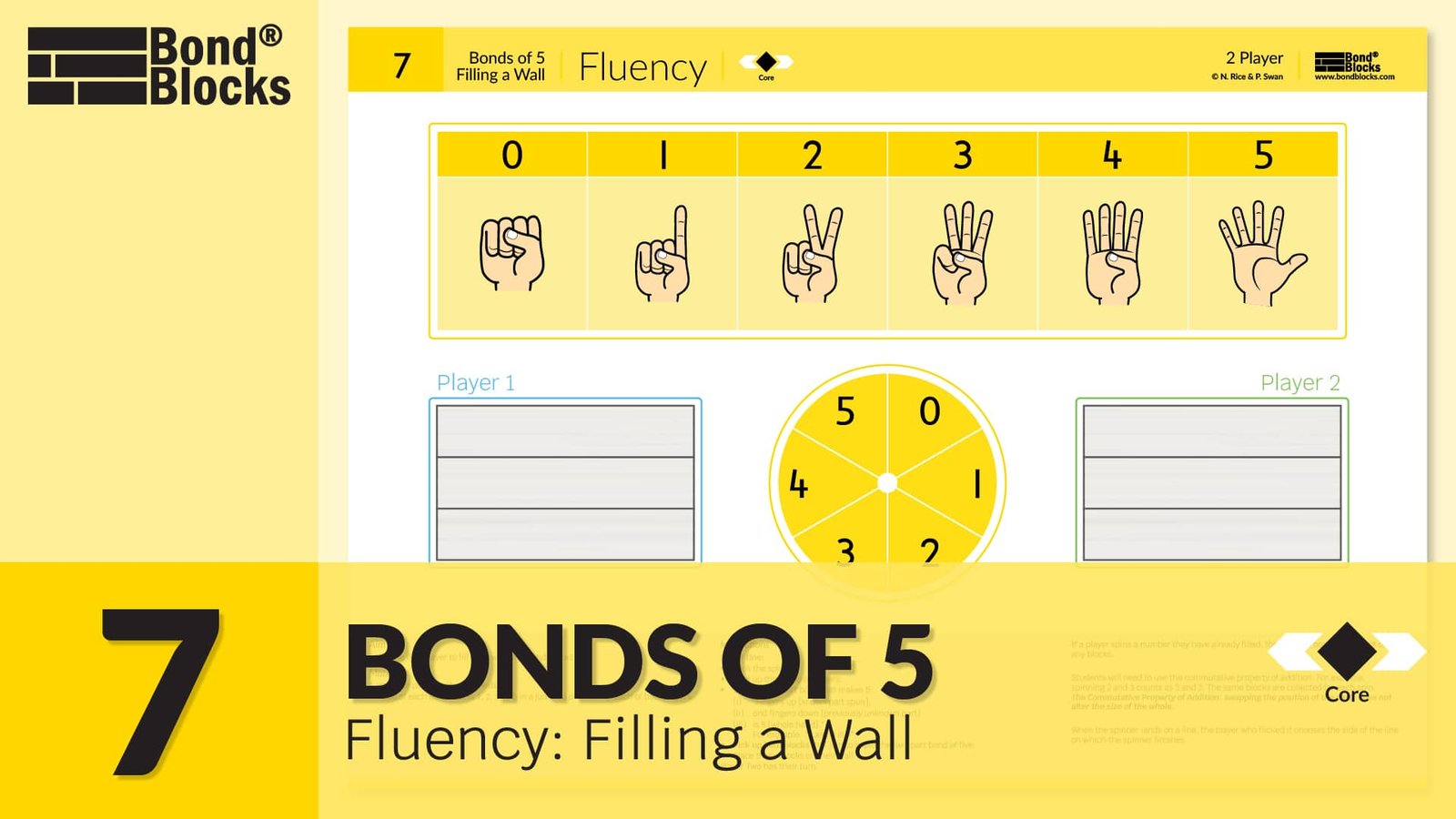7) Fluency
Bonds of 5: Filling a Wall

Mathematics
Develop fluency making two-part bonds of 5.
Language
- addition as “and”
- equals as “is”

Differentiation
A little easier
Consecutive order
Do not use the spinner. Build the wall in counting order. Use the diagram on the game board of the hands to work from zero to five.
- Start holding zero fingers up, say “0 and 5 is 5”, place the 5 block on the wall.
- Next hold one finger up, say “1 and 4 is 5”, place the 1 and 4 blocks on the wall.
- Repeat for each finger to five.
- NB fingers 3,4,5 blocks will not need to be collected because of the commutative property of addition. Student can point to the blocks already placed in their wall.

Building Mathematical Connections
This sequence of activities will help students connect the mathematical:
- Quantity (as subitised fingers and dots on a five frame)
- Language (said word “zero, one, two, three, four, five”
- Number (written numeral 0, 1, 2, 3, 4, 5)

The teacher rolls a pocket dice.
The student:
- Makes this amount on their hand using fingers in a subitised way and says the matching number word.
- Then students fill their frame with the matching amount of counters.
Students do NOT clear the frame of counters after making each number. Instead students alter the number of counters on the frame to make the new quantity. Doing this helps students learn about the comparative size of numbers. For example, 4 is 1 less than 5.
Click this link to download the pocket dice inserts and five frames.
Place this desk visual in front of students who have a tendency to count by ones. Encourage them to use this to help them make the representation instead of counting. Download using the link above.

Progression
The next fluency activity is slightly more difficult because the blocks are represented using diagrams that are not to scale. Go to
Activity 8
Bonds of 5: Fluency, Tic-Tac-Toe




